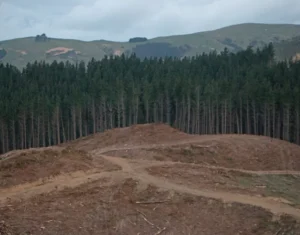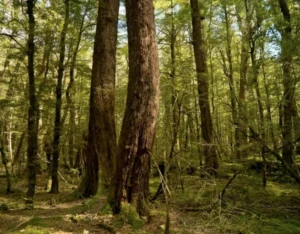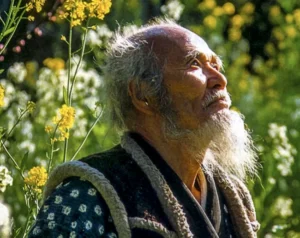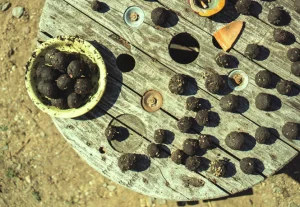
Something BIG is Stirring
We Need Your Support to Rewild Aotearoa

“I just want to plant trees”
When we came to New Zealand our goal was establish a safe place for the family away from the turmoil brewing around the world. This wondrous country offers that but as we settled, cracks began to widen in the idyllic vision we’d painted. And it was nothing to do with the earthquakes!
We’re all aware of the damage we’ve done to the World and New Zealand Aotearoa is merely the latest causality.
It’s very easy to play the blame game, it’s easy to get into heated debate and even conflict. None of this does any good.
We resolved to do what we could. We decided to plant what we could, where we could. Fix what we can, where we can.
It seems we’re not alone!
Rewilding is a new, (pro)active approach to biodiversity conservation.
The abandonment of rural areas worldwide provides huge opportunities for developing rewilding projects and creating new nature reserves – though it’s important to note that rewilding is necessarily a bottom-up process that can only be truly sustainable if it is set up and implemented in cooperation with local communities. Restoring ecosystems is key to our public health and mental well-being, and vital in the fight against climate change and mass extinction.
Rewilding is a form of ecological restoration with an emphasis on recreating an area’s “natural uncultivated state”. This may require active human intervention to achieve. Approaches can include removing human artefacts such as dams or bridges, connecting wilderness areas, and protecting or reintroducing apex predators and keystone species.
The general goal is to move toward a wilder, natural ecosystem that will involve less active forms of natural resource management. Rewilding efforts can aim to create ecosystems requiring passive management. Successful long term rewilding projects can need little ongoing human attention, as successful reintroduction of keystone species creates a self-regulatory and self-sustaining, stable ecosystem, possibly with near pre-human levels of biodiversity.
While rewilding initiatives can be controversial, the United Nations have listed rewilding as one of several methods needed to achieve massive scale restoration of natural ecosystems, which they say must be accomplished by 2030 as part of the 30×30 campaign.
Issues Faced

Around 1000 CE, before humans arrived in New Zealand, forest covered more than 80% of the land.
The only areas without tall forests were the upper slopes of high mountains and the driest regions of the South Island (which did have small pockets of tōtara). When Māori arrived, about 1250–1300 CE, they burnt large tracts of forest, mainly on the coasts and eastern sides of the two main islands. By the time European settlement began, around 1840, some 6.7 million hectares of forest had been destroyed and replaced by short grassland, shrubland and fern land. Between 1840 and 2000, another 8 million hectares was cleared, mostly lowland or easily accessible conifer–broadleaf forest.
By 2000 New Zealand had only 6.2 million hectares of native forest, most on mountainous land and dominated by southern beech.
It is said that New Zealand has suffered the fastest rates of deforestation over the shortest period.
Modern Kiwis are now seeing the effects of this damage and there is a growing movement to ‘fix’ the problem.
The current solution is to plant native forests through a labour intensive and very expensive process. The land is cleared and sprayed, native seedlings pre grown in a nursery are planted individually by hand, staked and then covered with a plastic protector. Spraying continues for the next couple of years as the trees establish.
This system currently costs in the region of $30,000/ha
Costs of forest restoration planting (Source MPI)
From these data, minimum, average and maximum forest restoration costs can be inferred. Assuming the typical planting density of 4,444 stem/ha (1.5 × 1.5 m planting spacing), and assuming seedling supply from a commercial nursery, professional planting crew, and one year of commercially implemented releasing and blanking, typical costs can be indicated by the survey data. Taking average costs for seedling supply, planting, releasing, and blanking – use of the most popular restoration grades results in average forest restoration planting cost of $22,314/ha, which equates to a simple costing of $5/seedling (i.e., $22,314/ha / 4,444 seedlings/ha = $5/seedling). The same scenario, but only for the second most popular seedling grade, results in an average forest restoration cost of $27,425/ha (or $6.2/ seedling).
Waterways
Planting fenced riparian areas adds further benefit to the environment as plants function like a sieve, helping to filter out sediment and nutrients before they enter waterways. Stabilising riparian plants help prevent land erosion and increase the habitat for native wildlife.
Waterways are of particular interest to rewilding groups but prove particularly challenging due to their terrain.
The Toxic Forestry Industry
 In Paul’s opinion Pine is a toxic weed, grown for the benefit of overseas markets
In Paul’s opinion Pine is a toxic weed, grown for the benefit of overseas markets
Forestry is an important industry for New Zealand with an annual gross income of around $6.6 billion. 1.6% of New Zealand’s GDP (Source MPI).
What are the environmental problems caused by forestry?
These negative impacts include: destruction of forest cover, loss of biodiversity, ecological imbalance, soil compaction, soil erosion, flooding, desert encroachment and disruption of hydrological cycle.
New Zealand now has 1.75 million hectares of planted forest, of which some 90 per cent is radiata pine, much in first rotation forests.
Pine has a three cycle lifespan. After this the soil is exhausted and can no longer support growth. It sheds massive quantities of toxic debris (pine needles, cones, pollen etc.) that smothers all other fauna except their own seedlings.
Their pollen (which is unattractive to bees) travels for great distance and causes major problems to water systems. Radiata seedlings quickly outgrow other species (even gorse) and in 6 months can be 1m high on inaccessible hill faces.
This species can suck up all available moisture and store it in its own canopy to prevent other species growing.
Pine timber when harvested, rots very quickly unless treated with toxic anti-fungal/insecticide solution immediately. It must then be treated with even more dangerous chemicals if it is being used for fencing or building material. Large areas contaminated by arsenic are thought to be caused by these timber treatment processes.
Old dying pine trees on fragile land leave 100mm diameter roots that have penetrated down 10m into the sub soil. These quickly rot to channel storm water into the subsoil which can cause major slips taking out whole hillsides.
Hundreds of millions of years of natural evolution designed native coniferous trees specifically for our unique island continent. These include rimu, totara, kahikatea, miro and others.
Issues Solved
 Paul recently purchased a farm in Ngatimoti and, wanting to restore much of the unusable or unproductive land to native began researching the process.
Paul recently purchased a farm in Ngatimoti and, wanting to restore much of the unusable or unproductive land to native began researching the process.
Having identified some 50 acres it soon became apparent that the costs were highly restrictive.
Paul’s land borders a recently planted native forest. Having spoken to the owner Paul learned that the bush is only twenty five years old and was started on bare paddock.
Roger, the curator, is passionate about restoring the forests and over the years has honed the process.
Step one is to use either an invasive species such as gorse or introduced Tagasaste as a nursery crop. This provides Nitrogeon and cover for the next phase of growth. Tagasaste is a fast growing tree grass with a flower that attracts birds such as Kiruru.
Guanau contains seeds of previously digested meals that begin to strike below the nursery cover.
After a couple of years natives reach the light. Shade intolerant gorse dies off leaving pristine bush.
Looking to accelerate this process Paul began to research seed bombing, replicating the natural rewilding process.
There is very limited information with regard to the process available and Paul has spent twelve months perfecting not only the process of making bombs but the vital recipe.
Controlled tests have proven highly successful with strike rates of up to 80% with certain NZ Native species.
Seed Bombs
 Masanobu Fukuoka incorporated his ancestral gardening techniques into his own farming methods and, in so doing, started a revolution.
Masanobu Fukuoka incorporated his ancestral gardening techniques into his own farming methods and, in so doing, started a revolution.
Seed bombs are little clay-covered mounds of seeds and growing soil. They’re often used to help reseed natural plants to wild areas, and they were first made popular by guerilla gardeners, people who use public space to grow things.
Seedbombs are an ancient Japanese practice called Tsuchi Dango, meaning ‘Earth Dumpling’ (because they are made from earth). They were reintroduced in 1938 by the Japanese microbiologist/ farmer and philosopher Masanobu Fukuoka (1913–2008), author of The One Straw Revolution.
Fukuoka led the way into the world of sustainable agriculture by initiating ‘natural farming’. His methods were simple and produced no pollution. His technique used no machines or chemicals and almost no weeding. Seedbombing was part of Fukuoka’s annual farming regime.
He believed that Mother Nature takes care of the seeds we sow and decides which crops to provide us with, like a process of natural selection, because ultimately nature decides what will grow and when germination will occur, be that in 7 days or several seasons away.
Fukuoka grew vegetables like wild plants – he called it ‘semi wild’. He seedbombed on riverbanks, roadsides and wasteland and allowed them to ‘grow up’ with the weeds. He believed that vegetables grown in this way – including Japanese radish, carrots, burdock, onions and turnips – are stronger than most people think. He’d add clover to his vegetable mixes because it acted as a living mulch and conditioned the soil.
Time to Feed Our Earth Some Happy Pills!
Rewilding With Seed Bombs
By using seed bombs we can accelerate the regeneration process exponentially. This is an excellent method for rewilding gullies, hard to access land and thick gorse.

Seed bombs are little clay-covered mounds of seeds and growing soil. They’re often used to help reseed natural plants to wild areas, and they were first made popular by guerilla gardeners, people who use public space to grow things.
Nature doesn’t work this way!
Animals and weather spread the seeds, the strong out-compete the weeds and Bob’s your uncle, a forest is born.
Seed Bombs are especially suited to scrub, wasteland and hard to reach places. In New Zealand we have a problem with Gorse, it was brought over by the Europeans as hedging but it loves the climate and has gotten out of control. Seeds can lay dormant for hundreds of years. You cut it down and within weeks it’s back. Fire just spreads more seed.
There’s no need to fight it!
Gorse is a fantastic nursery crop. The spikes protest seedlings from fauna, it fixes Nitrogen and once the tree creates any kind of shade, the Gorse dies.
Tree Lucerne (Tagasaste) is another great nursery crop. As the Tagasaste grows it fixes nitrogen and creates a fantastic nursery canopy.
Phase 1: make Tagasaste Balls
Phase 2: Now for the native seed bombs. Just throw away.
After a couple of years the natives burst through, the gorse or Tagasaste dies off and hey presto, a native forest no time.
Great Gift Idea
 These easy to make DIY Seed Bombs are perfect for gifts. Whether you need a small gift for teacher appreciation, Mother’s Day, Wedding Favors or any occasion.
These easy to make DIY Seed Bombs are perfect for gifts. Whether you need a small gift for teacher appreciation, Mother’s Day, Wedding Favors or any occasion.
When your seed bombs are finished, wrap each one (or several) in a colorful piece of fabric. Cotton fabric, burlap and other breathable materials are best.
Attach a label that tells the user what to do and there you have it. An eco-friendly gift that allows everyone to take part in helping bees.
How about organising a kids day, making bombs and throwing them on selected land!
I’m thinking about building a trebuchet for this 🙂
What do you think?
How to Make a Seed Bombs
With just:
- recycled paper or clay
- a seed compost
- a touch of fertiliser
- a pinch of chilli powder to keep insects at bay
- and a generous pinch of seeds because I’m too lazy to count
We use a 50/50 mix of clay to seed compost. The clay is required to bind the growing medium.
If clay is not available then paper mulch or even flour can be used.
Method:
- Empty the seeds into a bucket
- Add the growing medium to the bucket.
- Stir to mix everything together
- Add a small amount of water and stir. Repeat until you have a cake like mixture. You don’t want it too dry or too wet.
- Now the bombs can be formed – The mix just needs to be gently rolled in the hand to form a golf-ball sized ball
- Place the balls in a tray or box and allow them to dry for 24 hours
- Everyone outside now to throw, toss, roll or simply scatter their bombs!
Tips for Success!
- Ideally, seed bombs should be made the day before rain is forecast and then cast 24 hours later – hopefully before the rain has started! If it doesn’t rain then no matter, the seeds will be fine for a few days.
- If you are concerned that birds will eat the seeds then add a little paprika to the mix. It won’t hurt them but they don’t like it!
- In winter, when they need some help, the birds will appreciate some seed bombs containing bird seed
- Throw out the window of your car as you drive, or throw in those ugly places you don’t want to mow or you feel needs a bit of greenery.
April to June is the time for seed bomb making!
Once you’ve chosen your seed mix below you just need to source some flour and compost. Oh and maybe some aprons – things could get messy!
